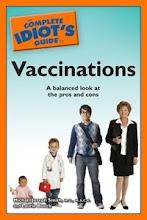With the Academy Awards approaching, I'm wrapping up my yearly quest to see as many of the movies nominated for Best Picture as possible before the show. Working my way through the list of nominated movies, I enjoyed the clever film The Artist, even though I was initially loathe to watch a French silent film about actors set during the Depression.
But this year's Oscar nominations have been frustrating for me as well, because I thought that Contagion would be nominated for Best Picture or for another major Academy award. Hollywood politics no doubt played a part in the nominations. But I wonder whether the Academy's passover of Contagion comes from a more primal place.
Contagion, which I saw in the fall, was a very difficult movie to watch. Although the script sometimes veered into science lecture territory, in general the movie seemed realistic and frightening as it documented how quickly a lethal virus could spread worldwide.
For me, the movie brought up fresh memories of the 2009 swine flu (H1N1) pandemic. I had been concerned about swine flu, not panicked about it, and mostly allayed my fears by passing out bottles of hand sanitizer to family members.
Because my pediatrician did not have access to the new H1N1 vaccine, in the fall of 2009 I took the kids to a local clinic to get vaccinated, waiting in line with other families and seniors. As the line grew and wrapped around the block, a rumor spread that the clinic had run out of the vaccine.
Suddenly, the police showed up, as if they expected the parents and seniors to riot in the street (and do what? Toss sippy cups and canes at them?). Their presence did not calm people down. It just made all of us nervous: what was going on? As it turned out, the clinic did have enough vaccine, and after waiting several hours in line, the kids got their shots. But the edginess in the line, and in the city, was real.
Now, many of us don't think much about the possibility of another influenza pandemic, until a movie like Contagion is released. Or until researchers are asked to suspend their work on developing a flu strain that is considered a biosecurity threat, as happened earlier this year.
Everyone's a little jumpy these days. Maybe even Hollywood, whose idea of entertainment includes a mother in a coma (The Descendants) and an actor in a downward spiral (The Artist), finds a movie about a global pandemic a bit too disturbing.
Showing posts with label H1N1 Rap. Show all posts
Showing posts with label H1N1 Rap. Show all posts
Friday, February 10, 2012
Tuesday, December 22, 2009
Is the H1N1 Vaccine Safe?
Is the H1N1 vaccine safe? I've heard this question a lot since I began promoting the book I co-authored, The Complete Idiot's Guide to Vaccinations. Young adults and mothers of young children tend to ask me about the H1N1 vaccine, because they are weighing the risks and benefits of getting vaccinated.
Modern vaccines are extremely safe. Problems such as bacterial contamination of vaccines, a serious threat several generations ago, has been largely eliminated through the use of preservatives and improved packaging. Many older vaccines have also been reformulated to reduce the risk of side effects (such as the old DTP vaccine, and the earlier rotavirus vaccine for children).
The H1N1 vaccine is made in the same way as the seasonal flu vaccine. The viruses that cause the flu are grown and biologically weakened in chicken cells, until they are still strong enough to create an immune system response in people, but too weak to cause the disease in a healthy person. Then the weakened viruses are either:
The CDC tracks health problems that might be linked to vaccines with the Vaccine Adverse Event Reporting System (VAERS). Both health care providers and the general public can report health problems that occurred after a vaccination to VAERS. Researchers monitor VAERS, looking for patterns of problems with a vaccine. If a pattern does occur, then they do further research within the Vaccine Safety Datalink (VSD), a database containing the health records from eight managed-care organizations across the country.
What have they found since they have been tracking the H1N1 flu vaccine? The CDC's Dec 11 Morbidity and Mortality Weekly Report (MMWR) found that the risk of serious side effects (adverse events) from the H1N1 vaccine is about the same as the risk for the seasonal vaccine. In a word: low. From October through November 2009, VAERS data showed 82 adverse events per million doses of H1N1, and 47 adverse events per million doses of seasonal flu vaccine.
Still, the rumors are flying about the H1N1 vaccine: that it can cause Gulf War Syndrome or Guillain-Barre syndrome, that it contains Agent Orange, and so on. The website FactCheck.org's "Inoculation Misinformation" article provides a good overview and rebuttal of some of the questions that have cropped up in emails and online about the H1N1 vaccine.
Modern vaccines are extremely safe. Problems such as bacterial contamination of vaccines, a serious threat several generations ago, has been largely eliminated through the use of preservatives and improved packaging. Many older vaccines have also been reformulated to reduce the risk of side effects (such as the old DTP vaccine, and the earlier rotavirus vaccine for children).
The H1N1 vaccine is made in the same way as the seasonal flu vaccine. The viruses that cause the flu are grown and biologically weakened in chicken cells, until they are still strong enough to create an immune system response in people, but too weak to cause the disease in a healthy person. Then the weakened viruses are either:
- killed and used in the seasonal or H1N1 flu shot (the best choice for people with weakened immune systems or other risks), or
- kept alive and used in the seasonal or H1N1 flu nasal spray vaccine (the best choice for certain people with healthy immune systems).
The CDC tracks health problems that might be linked to vaccines with the Vaccine Adverse Event Reporting System (VAERS). Both health care providers and the general public can report health problems that occurred after a vaccination to VAERS. Researchers monitor VAERS, looking for patterns of problems with a vaccine. If a pattern does occur, then they do further research within the Vaccine Safety Datalink (VSD), a database containing the health records from eight managed-care organizations across the country.
What have they found since they have been tracking the H1N1 flu vaccine? The CDC's Dec 11 Morbidity and Mortality Weekly Report (MMWR) found that the risk of serious side effects (adverse events) from the H1N1 vaccine is about the same as the risk for the seasonal vaccine. In a word: low. From October through November 2009, VAERS data showed 82 adverse events per million doses of H1N1, and 47 adverse events per million doses of seasonal flu vaccine.
Still, the rumors are flying about the H1N1 vaccine: that it can cause Gulf War Syndrome or Guillain-Barre syndrome, that it contains Agent Orange, and so on. The website FactCheck.org's "Inoculation Misinformation" article provides a good overview and rebuttal of some of the questions that have cropped up in emails and online about the H1N1 vaccine.
Wednesday, September 23, 2009
YouTubilicious: Science and Entertainment

This week, I attended a press preview of the new digital show, Journey to the Stars, at the California Academy of Sciences' Morrison Planetarium (billed as "the largest all-digital planetarium in the world") - the show officially opens on September 26. The stunning images, of the Orion Nebula (see picture), the Milky Way, and the spiderweb paths of satellites that criss-cross the earth, were created based on the latest astronomical data.
As the show zoomed through images of the solar system, showing how it might have looked 13 billion years ago and ending with a projection of the sun's demise 5 billion years from now, portentous music swelled in the background. The narrator on this galactic tour? Whoopi Goldberg.
I like Whoopi Goldberg; she's smart, funny, and sassy, as was her planetarium narration. But it's hard for me to imagine the stand-up comedien, The View co-host, and star of Sister Act seriously pondering the origin of the universe or the magnetic fields of Saturn.
On the other hand, a low-tech, soporific, Carl Sagan-esque explanation of how stars are formed might not be the right approach to teaching science to the public. I remember visiting Chicago's Adler Planetarium in Chicago with friends in high school many years ago - bright future alumni of MIT, Brown University, and the United States Naval Academy, among other schools - and watching them doze off one by one in the darkened room as the image of Orion the Hunter was superimposed over the constellation of Orion's Belt on the ceiling.
Science doesn't have to be boring, especially with the new technologies available today. If Pixar studios can give a desk lamp a sparkling personality with computer animation, why can't science be presented in a more engaging way? Maybe a little more entertainment is just what the doctor ordered. With that in mind, here are my favorite, toe-tapping music videos about my two most recent obsessions: swine flu (novel H1N1) and health care reform.
Dr. John D. Clarke, FAAFP, won a recent public service announcement contest sponsored by the department of Health and Human Services with his "H1N1 Rap". Who knew that HHS could be so hip?
In response to data that ranked the United States 37th in the world for the quality of its health care, Paul Hipp wrote the rock-and-roll song "We're Number 37", proving that you really can write a song about anything.
Subscribe to:
Posts (Atom)



